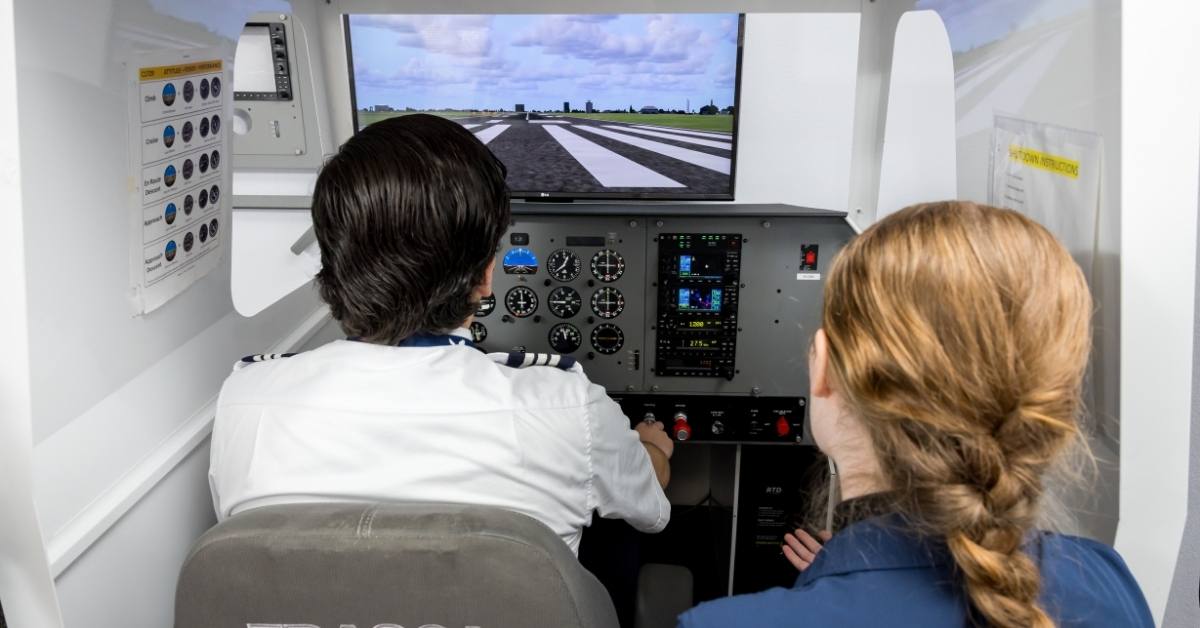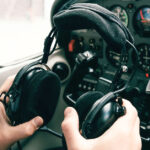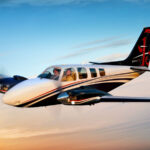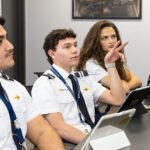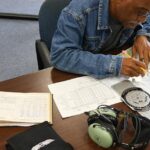The More You Practice, the Better You’re Prepared
Emergency preparedness isn’t just about reacting in the moment, it’s about training beforehand to recognize warning signs, think clearly under pressure, and respond with precision. For pilots, that readiness comes from a combination of hands-on flying and simulator training. But how do flight simulators compare to real-world experience, and how should pilots balance the two?
At American Flyers, we emphasize a simple truth: the more exposure you have to a wide range of situations, whether in the air or on the ground, the better equipped you’ll be to make smart, safe decisions when it matters most.
The Value of Simulator Training
Modern flight simulators are far more than screen-based tools. Today’s advanced devices are incredibly powerful learning platforms, capable of replicating everything from engine failures to navigation errors, adverse weather, and system malfunctions.
Simulators provide:
- Controlled Environment: You can safely practice scenarios that would be dangerous or impractical in real flight.
- Scenario-Based Training: Simulate emergencies like electrical failures, engine issues, or avionics malfunctions.
- Repetition Without Risk: Practice complex procedures again and again until they become second nature.
- Immediate Feedback: Instructors can pause, debrief, and review lessons on the spot.
- Cost-Effective Training: Sim time is more affordable than aircraft time, making it easier to train more frequently.
With the right instructor and curriculum, simulator training builds both technical skill and situational awareness.
What Real-World Flying Teaches You
While simulator training is invaluable, nothing can fully replicate the sensations and complexity of actual flight. In the air, you’re exposed to physical feedback, real-time weather, and the consequences of real decisions.
Here’s what real-world emergency training adds to your skill set:
- Environmental Factors: Turbulence, density altitude, terrain, and air traffic all affect how an emergency plays out.
- Stress Management: There’s no “pause” button in the air—pilots must stay calm and work through issues.
- Confidence Building: Knowing you’ve handled real issues in flight boosts your readiness for future situations.
- Multi-Layered Decision Making: Emergencies rarely happen in isolation.
Weather, passengers, fuel, and time pressure all come into play. The bottom line? Reality adds variables that simulators simply can’t recreate. That’s why in-air training is essential to well-rounded training.
A Blended Approach Builds Safer Pilots
At American Flyers, we don’t believe in choosing between simulator and real-world training; we use both to reinforce each other. Simulators allow students to learn complex procedures and build muscle memory. Then, we take those lessons into the cockpit, for real-world application.
For example:
- A simulated engine failure prepares a student for the steps and mindset needed.
- Simulated engine-out procedures, when conducted during training, help introduce the stress and urgency needed to build instinctive responses without ever shutting down the engine.
Similarly:
We can introduce cockpit resource management (CRM) in a sim, then reinforce it during cross-country flights with real distractions, weather deviations, and ATC interaction.
CFI-Guided Emergency Training
Our Certified Flight Instructors are more than just teachers, they’re mentors. They coach students through emergency decision-making processes in both the simulator and the air, helping build confidence through realistic, supportive instruction.
Training for emergencies is not just about memorizing checklists. It’s about:
- Recognizing subtle cues before a situation deteriorates
- Managing workload effectively
- Maintaining aircraft control while troubleshooting
- Communicating clearly with ATC and passengers
- Making timely go/no-go or diversion decisions
These are skills that grow through experience and repetition, and we focus on both.
Simulator Doesn’t Mean Simpler
At American Flyers, we use FAA-approved training devices that replicate real aircraft systems and instrumentation. Our students practice emergencies involving:
- Engine failures on departure
- Icing scenarios
- Autopilot or trim malfunctions
- In-flight electrical fires
- Spatial disorientation recovery
- Emergency descents and diversions
- Instrument approaches with partial panel
- And more
This training sharpens precision, decision-making, and response under pressure, because real emergencies rarely come with warnings.
Pilots Who Practice on the Ground and Perfect in the Air Are Safe Pilots
Emergencies are rare, but they’re part of the reality of flying. The best preparation is consistent, realistic training that emphasizes both technical execution and sound judgment. With a strong simulator foundation and practical follow-through in the air, pilots become more than certified—they become capable.
At American Flyers, we don’t just teach students how to fly. We prepare them to lead, adapt, and stay in control when it matters most.




